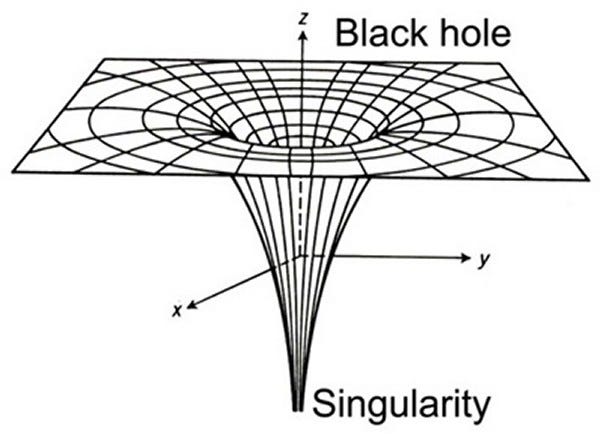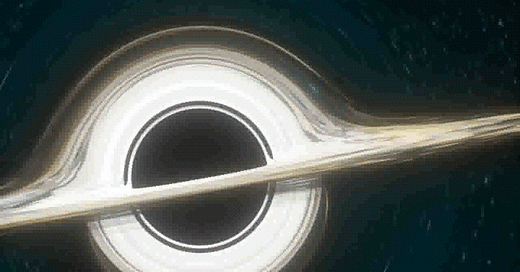Tip: For the best experience, read this article while listening to Interstellar’s theme here.
The universe is under no obligation to make sense to you. — Neil deGrasse Tyson
Greetings, fellow scientist.
Black Hole! You may react like this:
“ Something like that Gargantua from Interstellar? Yeah, I know what it is. It is a region in space from where nothing can escape.”

Congratulations! you know the most simple way to define a black hole. But hold on, don't think that you know everything about it. Nobody does. That's why we do science. A more precise definition of a black hole looks like this:
A region of spacetime where the gravitational force is so strong that nothing (neither particles nor electromagnetic radiation) can escape.
Discovery
The term black hole is of a recent origin, coined in the 1960s by John Wheeler.
English astronomer John Michell in 1783, was the first to propose the existence of such mysterious stellar objects. He argued that a sufficiently massive and compact star would have such a strong gravitational field that not even light would be able to escape it. A similar suggestion was made by French scientist Marquis de Laplace a few years later.

Then, in 1915, Albert Einstein published his masterpiece, the General Theory of Relativity. Massive stars end their lives in a highly energetic supernova explosion. The solutions of Einstein’s equations suggest that such a star would compress to a point of near-zero volume and infinite density. This idea is so bizarre that Einstein himself abandoned his theory.
But the black holes are very real. Scientists estimate that there are about ten million to a billion black holes in the Milky Way alone.
How do we know Black Holes exist?
Since light isn’t able to escape the vicinity of black holes, we can’t see them directly. But they can be detected through their gravitational influence on the surrounding matter.

In some binary star systems, sometimes we observe that a star is orbiting an invisible object ejecting x-rays. By knowing the properties like the mass and the orbital speed of the orbiting star, we can calculate the mass of its companion.
Observations suggest that the mass of the unknown object is too large to be a white dwarf or a neutron star. The object must be a black hole then. A famous example is a black hole Cygnus X-1 in the constellation Cygnus.

On September 14, 2015, the LIGO Observatory made the first-ever direct observation of the gravitational waves caused by two colliding black holes. It is the strongest evidence to date that proves the existence of black holes.
Features
Black holes physics is really complex. Remember that here, we are taking a lot of mathematics for granted. But who stops you from knowing about its features:

Singularity
An almost infinitely dense single point in the core of a black hole where all of its mass is concentrated. The space-time curvature becomes infinite at a singularity.
Event horizon
The boundary of a black hole, the region from where light rays just fail to escape is called the event horizon. It isn’t a physical boundary, but it marks a black hole’s surface.

Accretion Disk
A rotating disc of dust and gas around the event horizon of a black hole.
Formation
At the end of their lives, stars suffer gravitational collapse which results in massive explosions like supernovae. The kind of remnant they leave behind depends on their original mass.
If the mass of the remnant exceeds about 3–4 solar masses, there is no known mechanism by which the collapse can be halted, and the object collapses to form a black hole.

Theory predicts that there is another possible mechanism for their formation. Neutron stars orbiting each other in a binary system spiral inwards with time with the emission of gravitational waves. Eventually, they collide resulting in a Kilonova Explosion with the formation of a black hole.
Although black holes conceal so much of their identity, their study reveals so much about the history of our universe.
These monsters have defied every theory devised by humans till now to explain how our universe works. But if we wish to understand the true nature of our universe, we must continue in our role of looking up and asking the question “Why?”




This is the easiest way to make people understand this topic Great job!
Nice:)